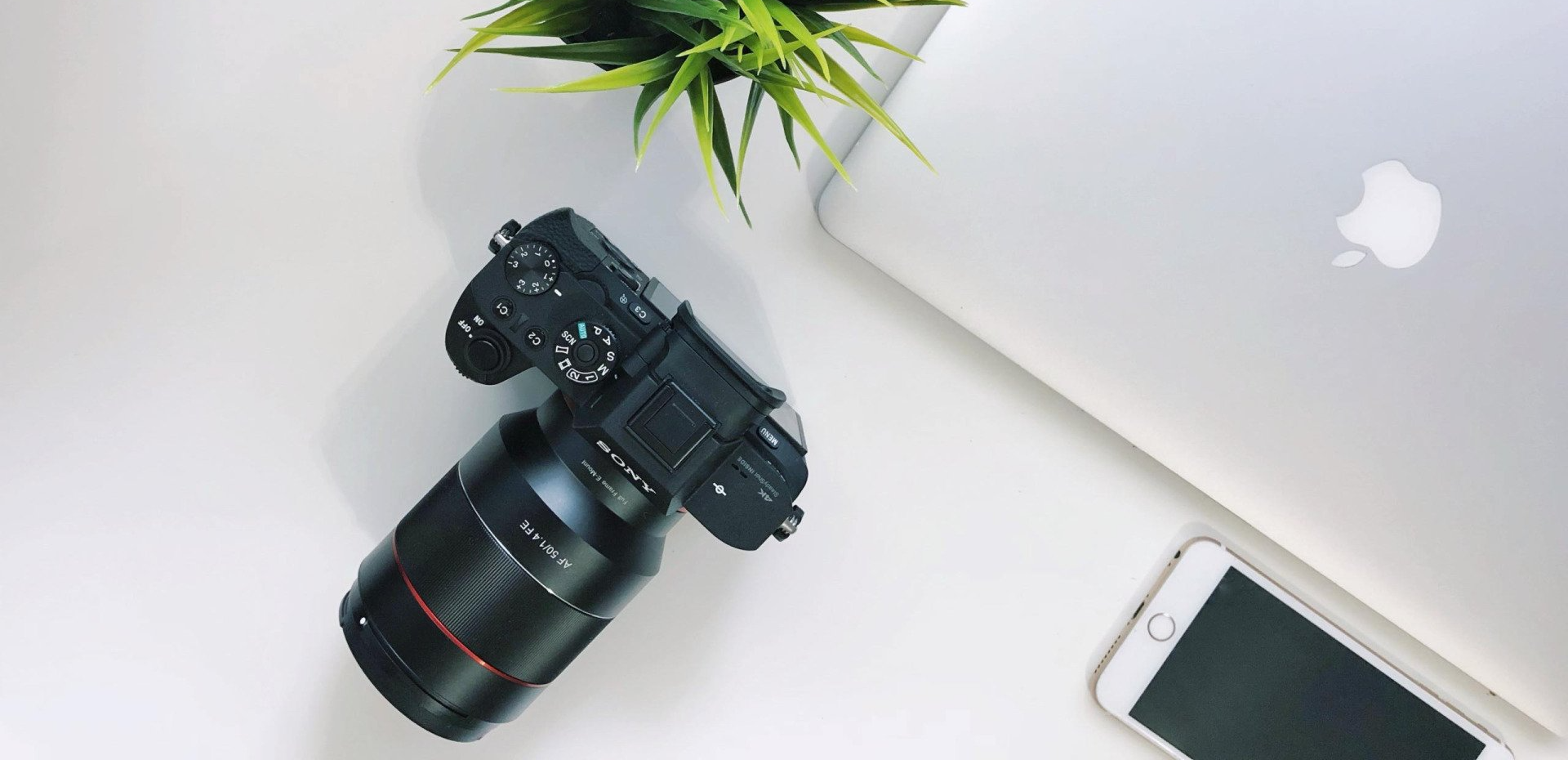Professional vs. iPhone vs. Stock Photography
How to now when to use what without breaking the bank
In the realm of marketing, there are three different types of pictures that you can use. You can hire a professional to come do a custom shoot for you, you can take pictures with your phone, or you can download stock images from the internet. With all of these options, it can be hard to know when to use what, so we're going to break it down for you and walk you through how make the most of your resources.
Professional Pictures
This is when you hire a photographer to come take pictures of your storefront, your products/services, and/or you and your team. Alternatively, you could provide the photographer with some of your products, and they could do a shoot in their studio. Pretty straightforward.
Pros of this option:
- The pictures will match your aesthetic and tell your story in the best way possible.
- You will receive professional, high resolution images
- Your images are personalized to you and your brand. No one else on the internet will have them.
- You get to benefit from the photographer's expertise, and can get some amazing shots that you might never have thought of.
Cons of this option:
- Working with a professional photographer can get expensive quick.
- Planning a photoshoot takes time, which won't work well if you need images in a pinch.
When to use:
In my experience, having done the whole gamut of marketing from web to social to print, here are the places that are worth it to bring in a professional.
- Websites: This is your main storytelling platform, and you want it to tell your story. You have about 0.05 seconds to make a first impression on new clients and you want it to be good. Using pictures that are personal and professional is a great way to do this. Plus, websites don't have to be updated that often, so once you get the initial set done, it will last for a long while.
- Headshots: Pictures of you and your team will be needed for so many different things. Your website, profile pictures for professional pages, bios and about pages if you guest post or are a speaker at an event, you get the picture. You want them to all look professional and consistent, and so it is worth it to get them professionally done.
- Professional deliverables: You are likely to have a variety of marketing materials such as brochures, posters, flyers, and even Powerpoint presentations. While not all of the images have to come from a custom shoot, it definitely helps if at least a few of them do.
As a photographer, I would love to say that a custom shoot is always the best way to go. As an entrepreneur, though, I know budgets can be tight. My rule of thumb for getting professional pictures done is to look at how long the pictures will remain relevant and how frequently they will be used. For example, it may not be important to get professional pictures of a particular event that you are hosting, but if it's going to be an annual event, or events like it are a key part of your organization, then it would be a great opportunity!
iPhone Photography
Smartphone photography has advanced so much in the last few years. While your phone's camera is not quite at the same level as a DSLR camera (contrary to popular belief), it can still get some amazing shots and is a great resource for entrepreneurs and small businesses.
Pros of this option:
- It's free. Need I say more?
- Your phone is always in your pocket, so you are always ready to capture a shot.
- You can easily get pictures on social media without a lot of different transfers.
Cons of this option:
- The image resolution will be much lower than if it were taken with a camera, so the image ideally shouldn't be used in a format larger than a 5x7 picture
- You don't have as much control over a smartphone camera as you would a DSLR, so the shots you can get will be more limited based on what your phone can handle.
When to use:
- Social media: The majority of the images on social media were taken with a phone, so it's totally normal if the quality isn't quite perfect. Plus the images won't be displayed as very large, so unless someone zooms in up close, the low resolution won't be that noticeable.
- Website + Print (sparingly): Sometimes you just get the perfect picture on a phone, and it's completely acceptable to use that picture on your website and print marketing. Just remember to keep the image display no bigger than a 5x7 image.
Overall, smartphone photography is an excellent option if you are at an event and want to capture the moment, or just redesigned your front window and want to share it with the world. Just keep in mind that the resolution will be lower, and so it won't be as usable in situations where the image would need to be large. Also, don't forget to edit your pictures, even if it's just hitting the magic wand in the photos app. No photographer gets a perfect image straight from the camera.
Stock Images
Stock images are images taken by professional photographers that are available for others to use for their own business or organization. Some of these are paid, such as Shutterstock and Adobe Stock, and some are free, like Unsplash and Pexels.
Pros of this model:
- Stock images are free or fairly inexpensive, but are still high resolution and look professional.
- You can download instantaneously, which is great if you need something in a pinch.
- There are millions of options out there, so it is generally easy to find something that matches what you need.
Cons of this model:
- Because they are so easy to download, it means that countless others have downloaded them as well, so they won't be distinctly yours and others may notice that they are stock images.
- It can be tricky to always find an image that meets your needs and matches your brand. As a result, your social media feed or website may look inconsistent if you are using a lot of stock images.
- Because they are stock images, they are designed to be generic, and as a result they won't be as representative of you and your company.
When to use:
- Stock images are generally my go-to for background images on websites, social media posts, brochures, etc. Situations where I need something, but it won't be the focal point of the piece.
- They are great for proposals or projects where you want to create a vision for what something could look like in the future.
Overall, they are a great resource that many are taking advantage of. As a result, the general public is getting more and more adept at identifying stock images. Just keep in mind the pros and cons, and use them to your best advantage!
Summary
Overall, selecting which images to use for what is a delicate balance of authenticity, professionalism, and what fits into your budget. When it comes time to make a judgement call, just keep in mind the pros and cons of each option, and pick the option that best meets your needs with your current priorities.
Have questions about which route you should pick? I would love to brainstorm this with you. Shoot me an email and let's start talking!


